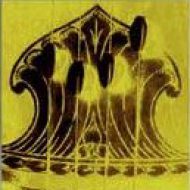A tala trainer for self-study by Kalaimamani TR Sundaresan (voice & lessons) & Ludwig Pesch (talam cymbals & concept) MP3 & PDF Access all the 25 audio files here >> Exercises (PDF) >> Archive.org Be patient while audio-files are loading. For details and more options visit https://archive.org/details/Tala-Anubhava-Experiencing-South-Indian-Rhythm >> Tips for self-study For some of the …
Category archives: Experience
“Cosmic Order, Cosmic Play: An Indian Approach to Rhythmic Diversity”
Music by Kalaimamani TR SundaresanConcept by Ludwig PeschInspired by a conversation on the subject of ‘korvai’ with the late Sangita Vidwan S. Rajam Cosmic_Order_Cosmic_Play-Ludwig_Pesch_KIT2001_webDownload Originally published in 2001 by KIT Publishers in Rhythm, A Dance in Time by Elisabeth den Otter (ed.) in conjunction with the exhibition titled “Ritme, dans van de tijd” at the …
Continue reading ““Cosmic Order, Cosmic Play: An Indian Approach to Rhythmic Diversity””
Flow | Janya practice 5 & 6 notes – raga Vasanta
sa = middle octave (madhya sthayi), ‘sa = higher octave (tara sthayi)Explore renditions of raga Vasanta on YouTube >>Find song lyrics (composers) & translations for these and other ragas >> Fondly invoking “spring” with ragas Vasanta & Basanta A suggested by its name, Vasanta occupies a special place for evoking the moods and longings associated with “spring …
Continue reading “Flow | Janya practice 5 & 6 notes – raga Vasanta”
